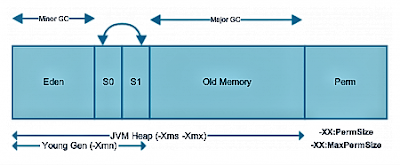Eg: Suppose we already have a profile AppSrv01, need to create an exact copy existing profile,
with different name AppSrv02 and more.
NOTE: Before proceeding towards any changes, take profiles or Config backup.
BACKUP Config command:
Navigate to $WAS_HOME/bin
./backupConfig.bat /app/IBM/WebSphere/AppServer/AppSrv01_ConfigDDMMYY.zip
-profileName AppSrv01
-username wasadmin
-password was@123
-trace
–nostop
BACKUP Profile command:
./manageprofiles.bat
-backupProfile
-profileName AppSrv01
-backupFile /app/IBM/WebSphere/AppServer/AppSrv01_PROFILE_DDYYMM.zip
********************************************************************************
Step 1. Make sure that the server is shutdown.
Step 2. Copy the existent profile from Profiles/<oldProfile> to Profiles/<newProfile>
Step 3. Update Path WAS_USER_SCRIPT in Profiles\<newProfile>\bin\setupCmdLine.bat
Step 4. Update Path USER_INSTALL_ROOT in Profiles\<newProfile>\bin\setupCmdLine.bat
Step 5. Update property user.root in Profiles\<newProfile>\properties\ssl.client.props
Step 6. Replace all occurences of <oldProfile> with <newProfile> in Profiles\<newProfile>\firststeps\firststeps.bat
Step 7. Edit AppServer\properties\profileRegistry.xml.
Make a copy of the <oldProfile> and update the tag values with the <newProfile>.
Should look something like this:
<profile isAReservationTicket="false" isDefault="false" name="newProfile" path=".....\Profiles\newProfile" template=".......\AppServer\profileTemplates\default"/>
Step 8. Copy AppServer\properties\fsdb\<oldProfile>.bat to AppServer\properties\fsdb\<newProfile>.bat.
This step will make the profile available to "AppServer\bin\manageprofiles.bat -listProfiles"
Step 9. Edit <newProfile>/config/cells/<cell>/nodes/<node>/variables.xml. Update the USER_INSTALL_ROOT path.
Step 10. Update the path of WAS_USER_SCRIPT in AppServer\properties\fsdb\<newProfile>.bat
********************************************************************************
Thanks :-)
with different name AppSrv02 and more.
NOTE: Before proceeding towards any changes, take profiles or Config backup.
BACKUP Config command:
Navigate to $WAS_HOME/bin
./backupConfig.bat /app/IBM/WebSphere/AppServer/AppSrv01_ConfigDDMMYY.zip
-profileName AppSrv01
-username wasadmin
-password was@123
-trace
–nostop
BACKUP Profile command:
./manageprofiles.bat
-backupProfile
-profileName AppSrv01
-backupFile /app/IBM/WebSphere/AppServer/AppSrv01_PROFILE_DDYYMM.zip
********************************************************************************
Step 1. Make sure that the server is shutdown.
Step 2. Copy the existent profile from Profiles/<oldProfile> to Profiles/<newProfile>
Step 3. Update Path WAS_USER_SCRIPT in Profiles\<newProfile>\bin\setupCmdLine.bat
Step 4. Update Path USER_INSTALL_ROOT in Profiles\<newProfile>\bin\setupCmdLine.bat
Step 5. Update property user.root in Profiles\<newProfile>\properties\ssl.client.props
Step 6. Replace all occurences of <oldProfile> with <newProfile> in Profiles\<newProfile>\firststeps\firststeps.bat
Step 7. Edit AppServer\properties\profileRegistry.xml.
Make a copy of the <oldProfile> and update the tag values with the <newProfile>.
Should look something like this:
<profile isAReservationTicket="false" isDefault="false" name="newProfile" path=".....\Profiles\newProfile" template=".......\AppServer\profileTemplates\default"/>
Step 8. Copy AppServer\properties\fsdb\<oldProfile>.bat to AppServer\properties\fsdb\<newProfile>.bat.
This step will make the profile available to "AppServer\bin\manageprofiles.bat -listProfiles"
Step 9. Edit <newProfile>/config/cells/<cell>/nodes/<node>/variables.xml. Update the USER_INSTALL_ROOT path.
Step 10. Update the path of WAS_USER_SCRIPT in AppServer\properties\fsdb\<newProfile>.bat
********************************************************************************
Thanks :-)





















